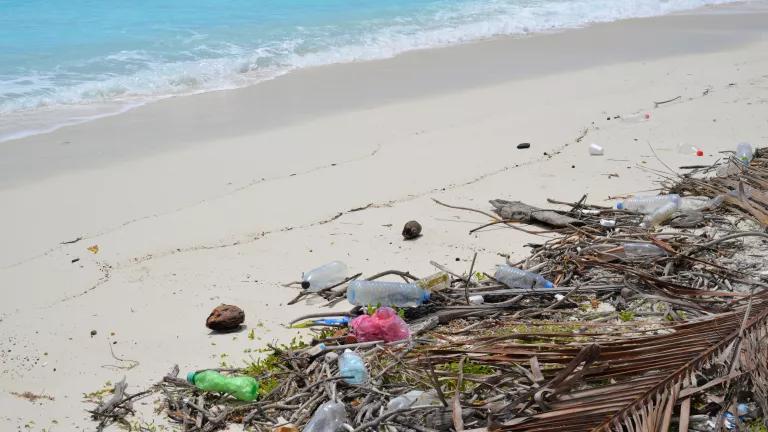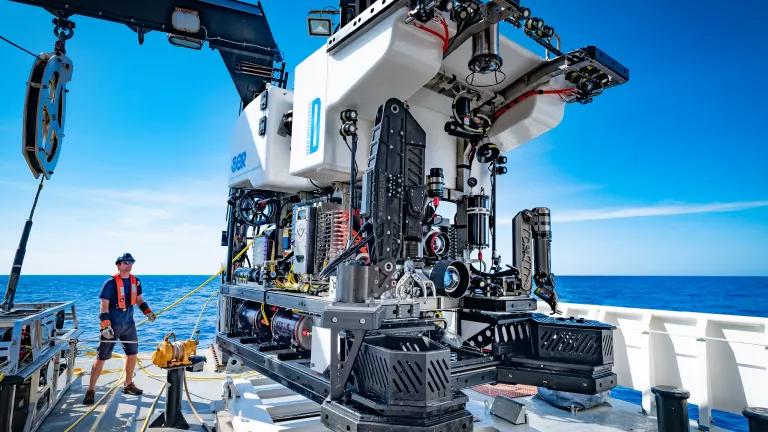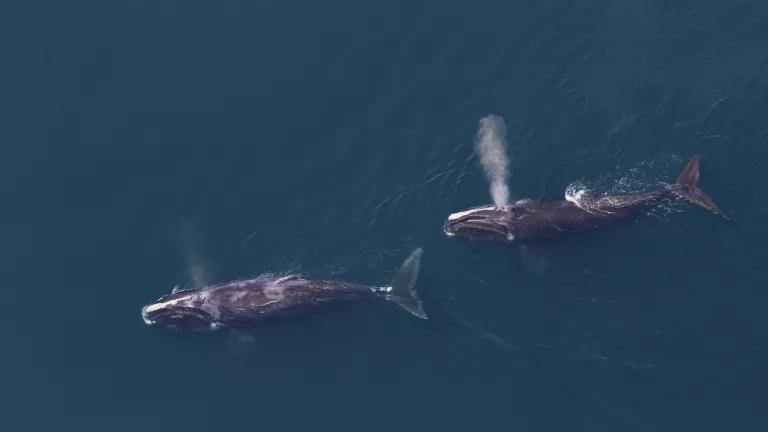Latin American Countries Act to Protect Oceans from Plastics

A landmark study released by United Nations Environment this week provides the first global assessment of government policies to address plastic waste and serves as an urgent call to action. Approximately 13 million tons of plastic are dumped into the world’s oceans every year, threatening human health, biodiversity and the economy. Unless current trends change, plastic production is expected to double in coming decades. The solution, notes the UN, rests with governments, companies and people. Latin America and the Caribbean, home to 16 million square kilometers of oceans and the source 24 percent of the world’s fisheries, cannot afford to stand on the sidelines. Fortunately, a number of countries in the region are making progress in devising policies and campaigns to tackle the plastic pollution that threatens their marine ecosystems and citizens.
Strong public policies are critical
According to Erik Soldheim, Executive Director of United Nations Environment, Latin America and the Caribbean is taking “bold measures against plastic pollution….creating laws and policies that drive a new plastic economy and protect precious natural resources.” Antigua and Barbuda was the first country in the Americas to ban plastic bags in 2016. Following this example, Colombia adopted a similar regulation and imposed a tax on large plastic bags which is expected to reduce their use by 35%. Similarly, Costa Rica adopted a strategy to drastically reduce the use of plastics by 2021 and Panama has banned polyethylene bags. Belize and Bahamas have strategies in place to reduce plastic use and are promoting conservation strategies for the Caribbean Sea which is the 2nd most polluted with plastics. Meanwhile, Ecuador is transforming the remote Galapagos islands into a plastic-free archipelago by banning the use and sale of plastic products such as straws, bags, and bottles. In recent weeks Chile has approved a law to ban the use of all types of plastic bags in stores throughout the country. This initiative was promoted by the Ministry of Environment with a far reaching social media campaign called “chao bolsas plasticas”(good bye plastic bags) to raise awareness on plastic consumption and reduce waste generation. Likewise, in Mexico, authorities launched a campaign on radio and social networks to reduce the use of straws. Authorities also plan to engage different stakeholders to put in place more stringent measures like eliminating plastic straws. Local governments are also engaging on the issue. The Mexican state of Quintana Roo, home to stunning beaches and important marine ecosystems, has started the process of changing its waste management law to prohibit plastic bags, straws and styrofoam.
Thousands of people throughout Latin America take action
To mark World Environment Day and World Oceans Day this week United Nations Environment’s Latin America regional office organized the “largest clean-up in the world.” Citizens, governments, and companies throughout the region helped pick up trash in Latin America’s lakes, rivers, and coasts, registering the type and weight of the garbage on a mobile app created specifically for this purpose. Thousands of people were expected to participate from Mexico to Uruguay, including Ecuador’s Galapagos Islands. United Nations Environment hopes that the clean-up will inspire new actors to join its Clean Oceans campaign, which pushes for a drastic reduction in the use of disposable plastics and dangerous micro-plastics. With Argentina, Honduras and Guyana joining the campaign this week, there are now 15 Latin American and Caribbean countries that participate including: Barbados, Brazil, Chile, Colombia, Costa Rica, Granada, Ecuador, Panama, Peru, the Dominican Republic, Saint Lucia, Uruguay. Actions in the region included cleaning up Carpayo beach in Peru, known as the “dirtiest beach in Latin America”. Tons of garbage, including plastics, wood, organic waste and tires, from nearby Lima is discarded in the ocean and accumulates on the beach.
Companies must also play an active role in protecting our oceans
In Colombia, the Corona beer company, in partnership with Parley for the Oceans, launched a campaign on World Oceans Day to raise awareness of how plastics damage water, wildlife, and ecosystems. Corona’s director in Colombia, Andrés Salazar, stated that, “with these campaigns, you have to reach people who traditionally see beaches as a place to relax, not a place to protect, because a lot of them don’t believe in the damage plastic does.” Adidas is also working with Parley for the Oceans by encouraging people to run during the month between June 8 – July 8, and then “donating” those kilometers. In this “Run For The Oceans” initiative, for every kilometer run, Adidas will donate US$ 1 to Parley’s Ocean Plastic program.
These kinds of actions can be examples for other companies in the region. A study by the World Register of Marine Species (WoRMS) found that, in Latin America, Brazil and Mexico have the highest rate of corporate participation in reducing plastics in the ocean. In both countries, for every 10 companies with annual revenues above US$ 100 million, 3-4 companies have had an active initiative in the last two years. By contrast, in Colombia, Ecuador, Chile, and Argentina, just 2 of every 10 companies met that indicator.
More still needs to be done
Yet despite encouraging progress in the region to raise awareness and design policies to reduce the plastic pollution that is devastating our oceans more ambitious actions are still necessary.
- To conserve our oceans, we must protect important places. This was the message sent to Chile’s President, Sebastián Piñera, this week, by 200 signatories to a letter calling on him to create the Humboldt Coastal Marine Protected Area. The area includes an archipelago of seven islands that are home to 68 plant species, 40 species of land birds, six species of nesting seabirds, and four species of land mammals native to Chile. Many emblematic species such as blue and humpback whales, gray and bottlenose dolphins, sea otters, and more visit. In addition, 80 percent of the world’s population of Humboldt penguins live there. Yet Chile recently gave the green light to Andes Iron’s port mining proposal, which the letter’s signers say is a “historic error.”
- Keystone marine species must also be protected to ensure the health of our oceans. Top predators like sharks are critical in maintaining balance in marine ecosystems. Yet unsustainable fishing practices and lack of scientific information often puts sharks in danger. To combat this, the MarViva Foundation in Costa Rica launched a “Save the Sharks” petition, calling on the government to collaborate with fishermen to establish better management measures that can ensure the survival of the most vulnerable shark species. Some of these measures include temporary closures of specific areas to protect the breeding waters of these vulnerable species and banning harmful fishing gear.
- It is critical that we continue learning about Latin America’s oceans to better protect them. A recent example that makes this evident was the recent release of the results of a four-year study and landmark expedition in the waters around Cayo Serranilla Island’s coral complex in Colombia. The Seaflower Expedition, which took place in 2017, included 16 separate research projects with the participation of 47 scientists of different disciplines from 27 Colombian and international entities. The experts identified 170 species of fish, some registered as new to the area, and also noted the absence of commercially important fish such as snappers and grouper.




